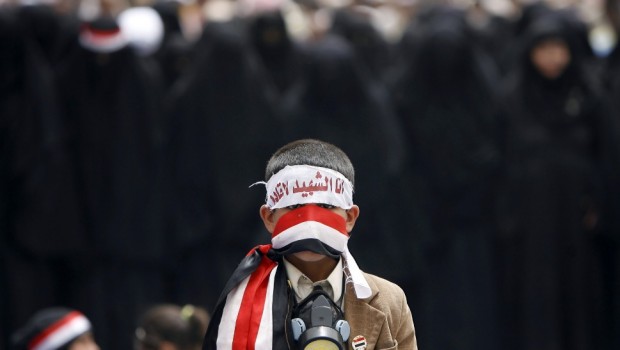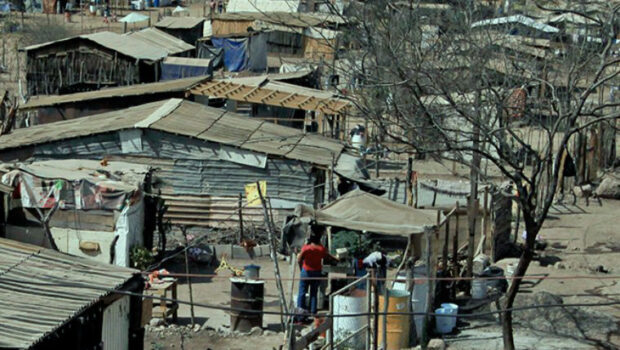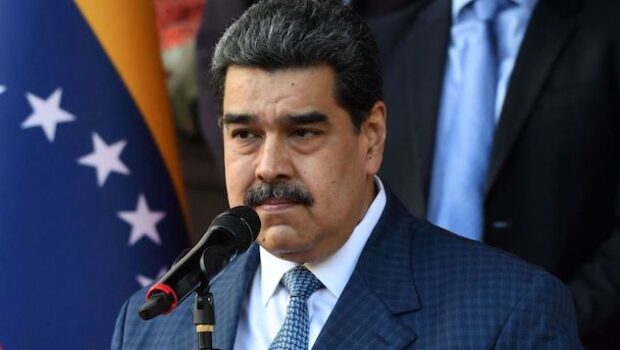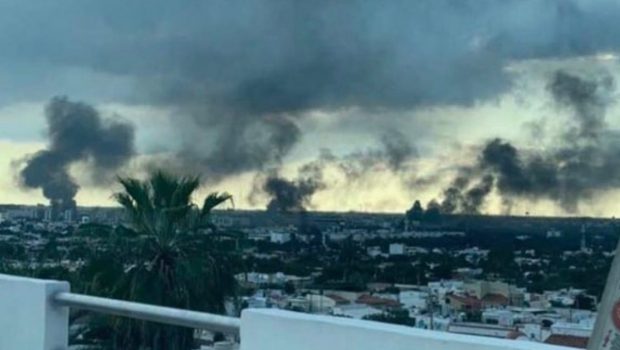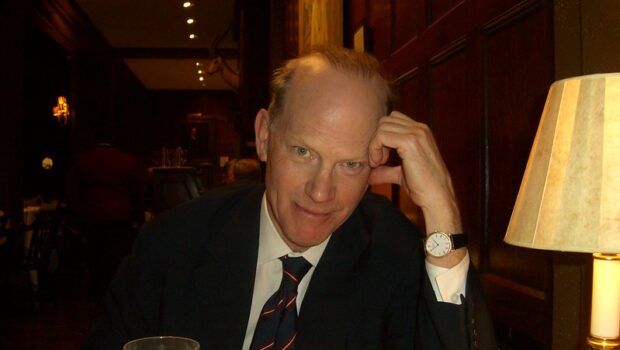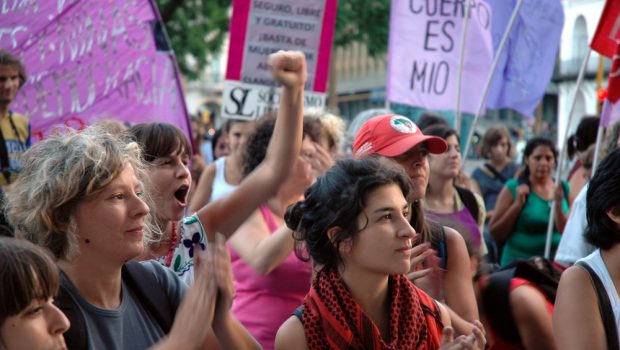The Arab Spring and the Latin Winter
La Primavera Árabe y el invierno latino
Miguel Ángel Centeno
Why do people rebel? This is one of the central questions of social science. Scholars on the side of power have often supported studies meant to make sure that change happened as little as possible, while those with revolutionary preferences sought to define the ideal conditions for social unrest. We have paid attention to underlying structural conditions (poverty, unemployment) and perceptions thereof (inequality, legitimacy), as well as the organization of rebellion and counterrevolutions. It turns out that predicting when popular discontent will translate into demonstrations on the streets is quite difficult. It is even harder to estimate when the unrest will threaten the survival of a regime. Actually foretelling when, and which regime will fall is well nigh impossible.
Examples of surprises abound: 1950s Cuba would certainly not have been on most people’s list to become the first successful communist revolution in the Americas. The Shah seemed like a good bet well into the 1970s. The list of Kremlinologists still reeling from 1989 is long. Alternatively, some regimes persist despite defying all sociological logic: North Korea, the United Arab Emirates, and, once again, post-1989 Cuba. In the most recent version of “stump the experts”, much of the Arab world exploded in 2011 and practically every political system in the region has been shaken if not brought down.
While watching the Arab Spring unfold, I could not but consider the dog that did not bark. For perhaps the first time in many years, Latin America is arguably the politically quietest region in the world. Despite exaggerated accounts of a “resurgent left” in the region, the local media portray a surprising political silence. There are some isolated noises and fireworks, but on the whole, things appear pretty tame on the “Latin Street”. Is it that all is going so well? Is it finally Latin America’s century? Certainly the news from Brazil has been good and even that usually acerbic observer, The Economist, had Christ arising again from the Corcovado. Yet, in reality, fundamental problems of poverty, inequality, and insecurity have not gone away. The Argentinean century-long decline continues, Peru’s riches rarely drip down on the miserably poor, and the Mexican state has without a doubt lost its monopoly on the use of violence. ¿Qué nos pasa?
I was asked by Literal. Latin American Voices to suggest some answers. Being a craven empiricist, I looked for the kinds of data that have usually been used to explain political change. Given the size of the two regions, I have focused on five Latin countries (Argentina, Brazil, Chile, Colombia, and Mexico) and seven in the Arab world (Algeria, Bahrain, Egypt, Jordan, Morocco, Syria, and Tunisia). While not a perfect sample by any means, I would argue that it is a reasonable one. The results once again confirm how idiosyncratic collective action can be.
The first and most obvious observation is that the Latin countries are generally wealthier. The poorest in one group (Colombia) is richer than the all but the wealthiest in the other (Bahrain). The proportion of poor (as defined by the various IGOs) does not seem that different, with the outlier being Morocco. In general, food security seems much more precarious in the Arab world and more subject to political interventions. People also seem to have better access to basic services in Latin America. Literacy is much higher as are enrollment ratios. Health delivery is also better among the Latins, although it has produced a minuscule difference in average life expectancy. One could posit that the Latins are quieter because they are better off.
They are also relatively freer: the Latin countries are vastly and uniformly more democratic than their Arab counterparts. Elections mean something in Latin America, the press is much freer, and the shadow world of secret police and informers much less omnipresent. Another crucial difference is that the Arab world is, on average, five years younger. More important is what those youth are doing. Measures of under- and unemployment and general “inactivity” are much higher in the Arab world. Thus, if protests, like nuclear reactions, require a minimum number of potential particles, the Arab world certainly has a much larger proportion of the key ingredient: frustrated young men. To this we should add the greater availability of an escape via the Rio Grande than via the Mediterranean; it is easier for discontents to exit Latin America.
We then should not be surprised by the Latin acquiescence. They are wealthier and older and have more escape routes via migration and the informal economy. Politically, they have many more rights and they generally lack the horrific dictators against whom to rally.
Yet, such economic data only capture aggregates while politics is often about relational conditions. One of the standard explanations for unrest is the notion of relative deprivation: you only feel as miserable as the gap between you and the better off. Here, one would expect much more political anxiety in Latin America, as it remains the world’s most unequal region while among Arab countries, only Tunisia even approaches American levels of inequality. (Even when looking at gender inequality, the Arab countries do not come off that badly, comparatively speaking). Rebellions also often begin in urban centers, and the Latins are much more likely to live in cities with a larger percentage living in what have been categorized as slums. The higher levels of educational attainment and the more extensive wiring of Latin American society via phone and PC should also be producing more discontent. Moreover, the organization of repression is much less institutionalized in Latin America. For example, the figures for crime indicate that the Latin states are much less capable or efficient in their daily functions of social control. All the data indicate that Latin America is a crime-ridden society while delinquency is fairly rare in the Arab world. Tourists in Cairo and Marrakesh may be as nervous as those in Rio and Ayacucho, but the local population is certainly much safer.
From this perspective, Latin America should be exploding as a result of the concentrated misery, the garishness of its injustice, and the relative ease with which political action could be organized.
Such macro and structural analyses miss the often equally important social basis for rebellion. Outbursts of mass anger may be the products of misery and deprivation, but to be effective they need something else: a sense of purpose. This is what may best explain the differences between the regions.
For a crowd to form and withstand the threats and danger of oppression it must have two essential elements: a belief in itself as a collective and a belief in the possibility of change. Both are impossible to predict but easy to recognize. The “Arab streets” of Tunis, Cairo, Benghazi, and the suburbs of Damascus seem to achieve a collective sense of unity and identity rarely found in Latin countries. Latin America is a fractionalized region divided by political and social divisions that make collective action very difficult. Perhaps it is a reflection of the relative homogeneity of the Arab states or a product of a less intense penetration by the culture of globalization, but social dynamics look very different. Rebellion requires some form of social capital and it may well be that Latin America has already expended its portion.
Even more importantly, the Arab crowds continue to believe that the control of the state still matters. In Latin America, the transitions to markets and democracies have arguably diminished political authority. For good or for ill, the state is no longer the center of social and economic existence. If anything, it has become increasingly irrelevant as the combination of mafias, migration, and privatization have eroded its influence. It may have made sense to blame ben Ali, Mubarak, Gaddafi, Assad, or the al Khalifas for their populations’ misery. It would be much harder to say that ousting the Kirchners or Alan García or Calderón was just as important.
It turns out that revolutions are not just about the present, but more importantly, they are about the future. We have seen that the former appears to be much better in Latin America than in the Arab world, however, we cannot ignore the power of hope and aspiration. Despite the disappointments to come, these still live in the Arab world. It has been a long time since we have seen the same kind of hopes in most of Latin America.
Traducción de Ilallalí Hernández Rodríguez
¿Por qué la gente se rebela? Esta es una pregunta central en las ciencias sociales. Especialistas sobre el poder sostienen que el cambio ocurre gradualmente, mientras que aquellos con preferencias revolucionarias tratan de definir las condiciones ideales para el malestar social. Prestamos atención al trasfondo de las condiciones estructurales (pobreza, desempleo) y a la percepción que se tiene de ellas (desigualdad, legitimidad), lo mismo que a las rebeliones y contrarrevoluciones. Pero resulta un tanto difícil predecir cuándo el descontento popular desembocará en manifestaciones en las calles. Es mucho más complicado aún estimar cuándo dicho malestar social amenazará la supervivencia de un régimen. En realidad, predecir cuándo determinado régimen caerá es casi imposible.
Abundan ejemplos admirables: ciertamente, los años cincuenta en Cuba no estarán en la lista de muchas personas como el primer éxito de la revolución comunista en América. El Sha perecía una buena apuesta hasta bien entrados los años setenta. La lista de kremlinólogos aún tambaleándose desde 1989 es larga. Por otra parte, algunos regímenes persisten a pesar de que desafían toda razón sociológica: Corea del Norte, los Emiratos Árabes Unidos y, una vez más, la Cuba posterior a 1989. En la versión más reciente de “stump the experts” (“politiquería de expertos”), gran parte del mundo árabe explotó en 2011 y prácticamente cada sistema político en la región ha sido sacudido e, incluso, derribado.
Mientras observamos cómo se desarrolla la Primavera Árabe, no puedo más que considerar al perro que no ladró… Políticamente hablando podría decirse que, por primera vez en muchos años, Latinoamérica es la región más silenciosa del mundo. A pesar de los exagerados relatos sobre el “renacimiento de la izquierda” en la región, los medios de comunicación locales oferecen un sorprendente silencio político. Existen algunos alborotos y fuegos artificiales aislados pero, en general, las cosas parecen muy apacibles en la “Calle Latina”. ¿Será que todo va muy bien? ¿Acaso es, finalmente, el siglo de Latinoamérica? Desde luego, las noticias de Brasil han sido buenas e incluso un observador mordaz, The Economist, sugirió que Cristo resurge desde el Corcovado. Sin embargo, en realidad los problemas fundamentales de pobreza, desigualdad e inseguridad no han desaparecido. El largo siglo argentino continúa en declive, la riqueza de Perú gotea rara vez sobre su pobreza extrema y el Estado mexicano se encuentra perdido, sin duda, entre su monopolio del uso de la violencia. ¿Qué nos pasa?
La revista Literal. Latin American Voices me pidió que sugiriera algunas respuestas a tales interrogantes. Por considerarme un empírico receloso, busqué qué clase de datos se han utilizado para explicar el cambio político. Dado el tamaño de las dos regiones, me centré en cinco países de América (Argentina, Brasil, Chile, Colombia y México) y siete del mundo árabe (Argelia, Bahrein, Egipto, Jordania, Marruecos, Siria y Túnez). Aunque no son muestras absolutas, creo que son razonables. Los resultados confirman, una vez más, cuán idiosincrásicas pueden ser las acciones colectivas.
La primera y más obvia observación es que los países latinoamericanos son generalmente más ricos. El más pobre de un grupo (Colombia) es más rico incluso que el más rico del otro grupo (Bahréin). La proporción de pobres (como los definen diversas instituciones intergubernamentales) no parece tan diferente, con el valor atípico de Marruecos. En general, la seguridad alimentaria parece ser más precaria en el mundo árabe y más sujeta a las intervenciones políticas. Las personas también parecen tener mejor acceso a servicios básicos en Latinoamérica. El alfabetismo es mayor, en proporción de la matrícula estudiantil. Los servicios de salud son mejores entre los latinos, aunque se ha producido una minúscula diferencia en la expectativa promedio de vida. Podríamos pensar entonces que los latinoamericanos se encuentran más tranquilos porque están en una mejor situación.
También son relativamente más libres, vasta y homogéneamente más democráticos que sus contrapartes árabes. Las elecciones aún significan algo en Latinoamérica, la prensa es mucho más libre y el mundo sombrío de la policía secreta y del espionaje no está omnipresente. Otra diferencia crucial consite en que, en promedio, el mundo árabe es cinco años más joven. Pero qué hace esa juventud. Las medidas de desempleo, subempleo y en general la “inactividad”, son mucho más altas en el mundo árabe. Por lo tanto, las protestas –como las reacciones nucleares– requieren un número mínimo de partículas potenciales: el mundo árabe tiene, en efecto, una proporción mucho más grande de ese ingrediente clave: jóvenes frustrados. A esto debemos sumar que es más factible cruzar el Río Grande que el Mediterráneo. Salir de América Latina es más fácil.
Por lo mismo, no debería sorprendernos la aquiescencia latinoamericana. Es más rica, más vieja y cuenta con más vías de escape para la migración y la economía informal. Políticamente tiene muchos más derechos y carece (en general) de dictadores contra quien manifestarse.
Sin embargo, no se trata únicamente de recojer datos económicos puesto que la política, a menudo, es asunto de condiciones y correlaciones. Algo común para explicar un malestar social es el concepto de privación relativa: la miseria es percibida en relación con la brecha que existe entre una situción particular y la de quien está mejor. En este caso, se podría esperar más ansiedad política en América Latina ya que sigue siendo la región más desigual del mundo, mientras que entre los países árabes sólo Túnez se aproxima a los niveles de desigualdad de América. (Incluso cuando se observa la desigualdad de género, los países árabes no salen tan mal, comparativamente hablando). Las rebeliones comienzan a menudo en los centros urbanos y los latinos son mucho más propensos a vivir en ciudades con alto porcentaje de barrios bajos. Los mejores niveles educativos y la más amplia conexión telefónica y de computadoras de América Latina deberían propiciar un mayor descontento. Por otra parte, la organización de la represión es menos institucionalizada en América Latina. Por ejemplo, las cifras de la delincuencia indican que los Estados latinoamericanos son mucho menos capaces o eficientes en sus funciones diarias de control social. Todos los datos indican que América Latina es una sociedad con altos índices de criminalidad, mientras que la delincuencia es bastante rara en el mundo árabe. Los turistas en El Cairo y Marrakech pueden estar igual de nerviosos que los los de Río y Ayacucho, pero la población local es, sin duda, mucho más segura.
Desde esta perspectiva, América Latina debía estallar dada la alta concentración de su miseria, la estridencia de su injusticia y la relativa facilidad con la que podría organizarse una acción política.
Tales análisis macro y estructurales perdieron la base social que a menudo es fundamental para la rebelión. Las insurrecciones masivas pueden ser el resultado de la miseria y la privación, aunque para su efectividad necesitan de algo más: un sentido para sus propósitos. Esto es lo que puede explicar mejor las diferencias entre las dos regiones.
Para que una multitud se forme y resista las amenazas y opresiones debe tener dos elementos esenciales: creer en la posibilidad de un cambio y en sí misma como colectividad. Ambos son imposibles de predecir, pero fáciles de reconocer. La “calle árabe” de Túnez, El Cairo, Benghazi y los suburbios de Damasco, parecen lograr hoy un sentido colectivo de unidad e identidad que difícilmente se encuentra en países latinoamericanos. Latinoamérica es una región fraccionada por divisiones políticas y sociales que hacen muy difícil la acción colectiva. Aquella quizá es el reflejo de la relativa homogeneidad de los Estados árabes o producto de una penetración menos intensa por parte de la cultura de la globalización, pero la perspectiva social es muy diferente. La rebelión requiere de alguna forma de capital social, y bien puede ser que Latinoamérica ya gastó su parte.
Más importante aún: las multitudes árabes siguen creyendo que el control del Estado todavía importa. Por su lado, es posible argumentar que en América Latina las transiciones a la democracia y el mercado han disminuido la autoridad política. Para bien o para mal, el Estado ya no es el centro de la existencia social y económica. En todo caso, se ha vuelto cada vez más irrelevante mientras las mafias, la migración y la privatización en su conjunto han debilitado su influencia. Puede tener sentido culpar a Ben Ali, Mubarak, Gadafi, Assad o a los califas de la miseria de sus poblaciones. Sería más difícil decir que es importante expulsar a Kirchner, Alan García o a Calderón.
Las revoluciones no actúan únicamente sobre el presente, incluso es más importante su futuro. Hemos visto que el presente parece ofrecer mejores condiciones en América Latina que en el mundo árabe; sin embargo, no podemos ignorar el poder de la esperanza y la aspiración. Éstas aún viven en el mundo árabe, a pesar de las decepciones por venir. La última vez que observamos tal esperanza en algún país de América Latina parece haber ocurrido hace mucho tiempo.


